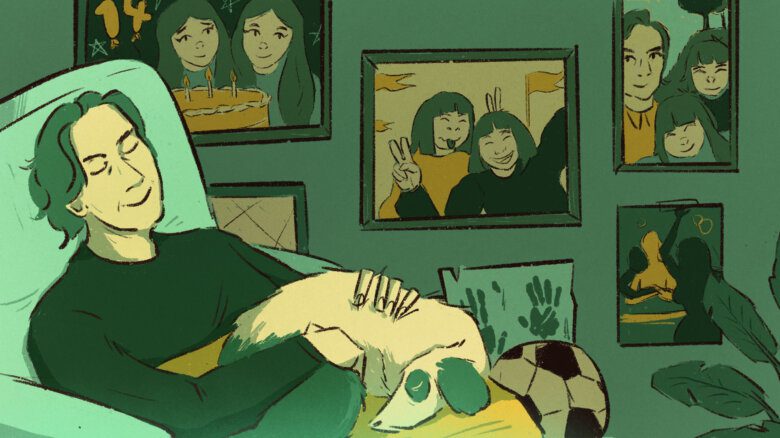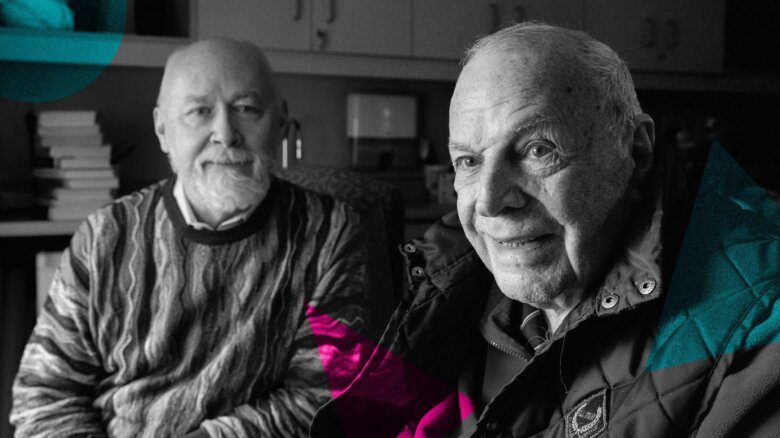In our nine-part series, Queering Family, we meet people across North America who are redefining what it means to build and sustain a family. Whether supporting a trans teen in coming out, creating a drag family from scratch or helping to raise someone else’s kids, these parents, children and caregivers illustrate the myriad ways that fostering loving networks might just be a queer superpower. Previously, we were introduced to three families trying to raise the kids in a gender-open way. Below, we meet Tudor and Evan Robins, who have their own unique gender journey. Parent and child came together recently to discuss the challenges and joys involved when Evan came out as trans, in the hopes of helping other families navigate a sometimes-bewildering process.
EVAN ROBINS: I was reborn at the age of 18, on October 31, 2020. That’s the day I started feminizing hormone replacement therapy, or HRT.
I first contemplated transition when I was 15 and was trying to put words to the disparity between how I saw myself and how I was seen by the world. If asked, I’d label myself pansexual or bisexual, depending on the situation. And while I was hesitant to experiment with alternate pronouns or modes of gender expression, I was beginning to understand that I wasn’t wholly comfortable with being cis.
Telling my mom was probably the hardest part of coming out. I barely had the language to describe how I felt, and sharing such an essential and vulnerable part of myself was like baring an open wound. In the end, she hugged me and told me she loved me, and we proceeded from there. Over the months and years that followed, she and my father were steadfast in their support. It wasn’t easy, and I was often out of my depth, but I made it through.
TUDOR ROBINS: Evan told me things as she found words to express them. I was as included as a parent could hope to be. Whenever there was a shift—the first time I saw her with painted nails, the first time she wore a skirt in front of me, her first appointment at the trans health clinic—my chest would tighten and my pulse would quicken. Then I’d get used to it. The morning I first saw an Instagram post in which Evan used she/her pronouns, it was like the moment, 19 years earlier, when my water broke. I emailed my close friend: “It’s happening.” “Yep,” she answered. “You knew it would. Now you get to be a parent.” Her words—and the idea of stepping up to be the parent I wanted for Evan—helped me.
Now Evan and I are hoping something we say here—from letting trans youth decide when to come out for themselves to the benefits of pushing your luck with a bureaucrat—will help families like ours.
How to be there for your trans kid:
6 takeaways
DO give them space to figure things out at their speed.
DO find your own support system to avoid burdening them with your questions and insecurities.
DO wield your influence to get them the help they need if they can’t access it themselves.
DO be prepared to change—from putting away old family photos to overhauling a wardrobe—but don’t rush it.
DON’T leave them to come out on their own—offer to share the news with certain people on their behalf.
DON’T forget that parenting your child is a joy and a privilege.
Don’t feel the need to rush anything
EVAN: When coming into your emerging gender identity, your first instinct may be to make a drastic change. That’s how it was for me. However, transition is a slow and multidimensional process. While it’s tempting to move quickly, we’re rarely afforded the opportunity. If you decide to medically transition, you’re kick-starting a second puberty (which believe me, takes just as long as the first!). And no matter what transition involves for you, it can last for the rest of your life.
The luxury of a clearly defined start and finish is usually elusive, so it’s important to have compassion for yourself throughout an often frustrating process. Fast isn’t always better—in fact, I’d say it rarely is. Should the wait time at a clinic specializing in wraparound transition care be longer than simply going to an endocrinologist, that’s okay! It’s preferable to wait for appropriate care.
And anyhow, there will almost always be things that are out of your control. For example, I first sought out HRT in March 2019, through a clinic in my hometown of Ottawa, but just days after my appointment, the pandemic shut down that avenue. Fortunately, once classes kicked off at Trent University that fall, I was able to access hormones through my school clinic.
TUDOR: As a parent, letting your child follow their own timeline and decide when is best for them is harder than it sounds. I remember thinking, Maybe Evan could just wait to start shaving her legs until after the family reunion? And, It would be helpful if she’d adopt new pronouns before I start my new job, so I can simply introduce myself as the mother of a son and a daughter.
Those thoughts had to do with lots of things, none of which put Evan first. I was wondering (worrying) what other people would think and focusing on how Evan’s transition affected me. Those concerns are natural and having them isn’t necessarily wrong, but it’s not helpful. You can’t unthink them, but you don’t have to act on them. And, in some ways, there’s freedom in letting the timeline unfold without intervening. “It’s not about me” can be hard to come to terms with, but it can also be liberating.
What to do while you wait
TUDOR: As the CPCO (central planner and chief organizer) of our family, Evan has left this topic to me.
We’ve established that transition isn’t instant, overnight or cataclysmic. On the one hand, there’s time to breathe; on the other, there’s time to fret. So, what can a parent do during the inevitable waiting periods?
- Keep most things the same. Your child is, at their core, the same person you’ve always known. They have the same likes and dislikes and they have the same place in your family and in your heart.
- Change what needs changing. Don’t be afraid to ask your child for guidance regarding what shifts they’d like to see. For example, they might want to remove older photos from around the house or clear out their closet to make room for new clothes. The first Christmas Evan was on HRT, I realized I’d automatically bought boxer shorts to put in both my kids’ stockings—a family tradition. Would I hurt Evan’s feelings if I gave them to her? Would she feel left out if I didn’t? In the end I asked her. She declined them, and her brother got a double-dose of underwear.
- Rally support. Search out resources that resonate with you. Read widely. Find a therapist if that helps, and figure out which friends and family members you can trust. Even if your child’s not at the point of coming out widely, it’s okay to share the news with a trusted ally or two.
- Consider fertility preservation. This won’t be an option or a priority for everyone, but it’s worth talking to a doctor about. The waiting period before HRT can be a great time for this.
When and how to share the news
EVAN: Telling people you’re trans is something that never really stops, but it can be particularly daunting early on. I remember how scary it was to advocate for myself when asked for my pronouns, or to correct people who misgendered me. (Nowadays I’m far more unabashed.) Knowing my parents were supportive was hugely beneficial.
With my consent, my mom and dad informed our family, friends and neighbours of my transness on my behalf. Not only was this a huge relief emotionally, it also spared me the logistical nightmare of having to come out to anyone and everyone I knew one after the other. It’s common to feel isolated when you’re transitioning. The most impactful thing my parents did was to show me that I wasn’t alone, and that they weren’t going to leave me to fend for myself.
TUDOR: My husband and I were happy to take the weight of telling neighbours, friends and family off Evan’s shoulders. Frankly, I was eager to finally share the news. It was a chance to tell people the kind of things we don’t usually make a point of sharing, like “You’re important to our family,” and “We care about you” and “We trust you with this news.” It also allowed them to respond in kind, telling us how much they love Evan and our family and how we had their support and admiration.
I’m not naive—I know Evan’s news wasn’t universally met with delight. But our email was clear: we love and support our daughter and we aren’t interested in negativity. Everyone was smart or respectful enough to mind our words, and I’ll take that as a win.
How to navigate “the system”
EVAN: There can be many steps in a transition, and personally, I’ve found the administrative aspects most difficult. The best approach is to thoroughly understand the process and your rights before undertaking anything. There’s usually a correct order when it comes to filling out paperwork and changing ID. When I was trying to get my driver’s licence reissued, for example, my request was initially refused at the Service Ontario desk. It took my mother stepping in for the staffer to concede—Mom’s thorough knowledge of the process was undeniable. All to say, navigating the system can be daunting and it helps to have somebody by your side.
TUDOR: I’ve become more of an expert on ID than I ever thought possible. I’m also now more aware of how often an issue can potentially arise. While on a trip to B.C. with Evan I saw just how many times she had to show her (thankfully updated) driver’s licence, and when she got her COVID vaccine I wondered if she’d face difficulties because she was still classified as “M” in the system (in the end it was fine). Having a valid ID is a human right. Our systems in Ontario are better than in other places but they’re not nearly as good as they should be. Here’s what I learned:
- Be informed. When the Service Ontario clerk told Evan, “I can’t update your licence for you,” I knew she was wrong.
- Be firm. “I know you can help me” is often a good start. Followed up with, “Don’t worry, I can wait.” (By which I mean, all day. In front of your desk.)
- Ask questions. When something seems nonsensical, flag it. If the person in front of you can’t explain why a policy exists, request to speak with someone who can.
- Use your power. It’s both sad and true that people will do things for me—a cis woman—that they won’t do for my daughter. Maybe someday that won’t be the case, but while it is, I’ll have Evan’s back. If you have similar privilege, wield it.
What to think about moving forward
EVAN: For me, transition is a forward-looking process. Because none of the changes are immediate, and many will take a long time, you’re always looking ahead to the future. At the start of your transition you may be focused on overhauling your wardrobe, updating your legal documents or accessing hormones, but long-term questions like, “Where do you want to be as a person in five years?” and even “Do you want kids?” are also important. Before I started HRT, my mom drove me to Toronto for fertility preservation at Mount Sinai Fertility in case I wanted biological children in the future. At the time I was skeptical, but in hindsight I’m glad I took that step.
TUDOR: There are lots of helpful resources for families out there, but so many of them start with “Try not to be angry” or “You might be grieving.” What they don’t often say is this: parenting your trans child is a joy. Evan has changed and so have I. I’ve opened my mind, strengthened my resolve, toned down my judgment and questioned my assumptions. I’ve met some of the kindest people I’ve ever known, and I’ve found an abundance of kindness in people I already knew. Best of all, I’ve seen my daughter become happier.
EVAN: I hope this guide can impart just a bit of the wisdom I wish I’d had when I started thinking about transition more than five years ago. One of the greatest gifts that stepping fully into my womanhood has given me is proximity to other trans people, and the indispensable knowledge they’ve shared with me. The best thing I can do now is to pass on what I have learned, in the hopes of helping those still to come.
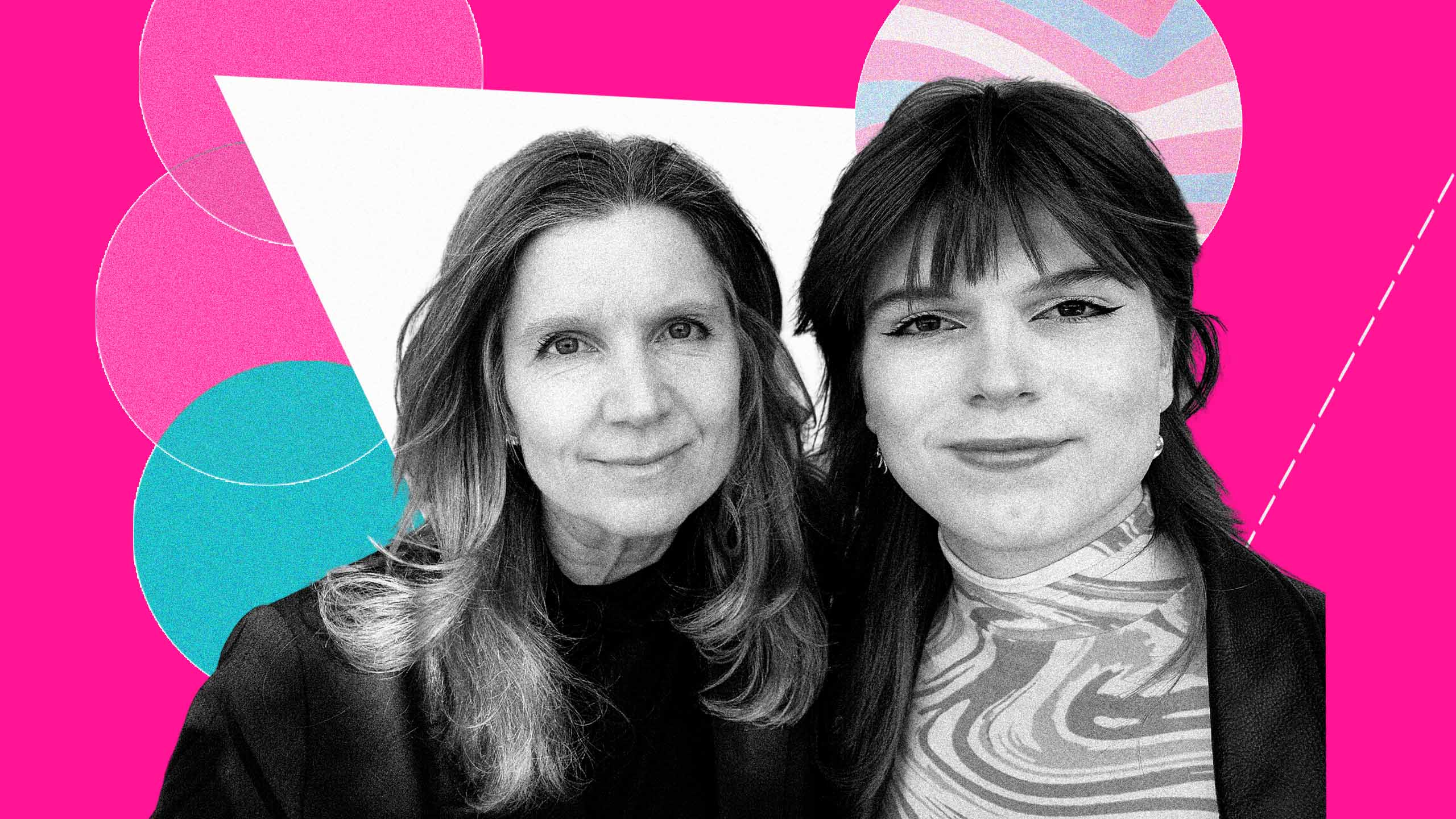
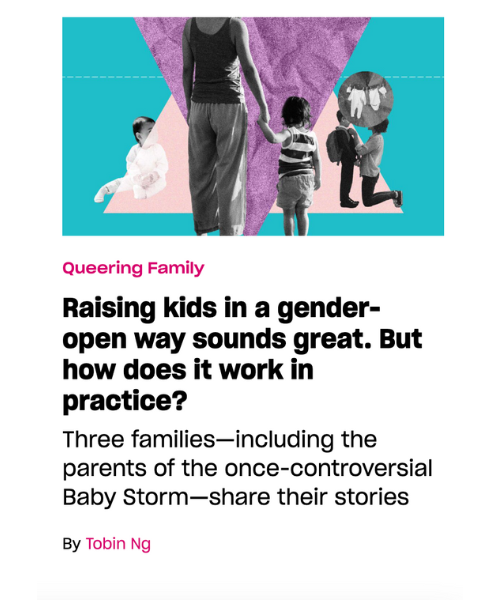
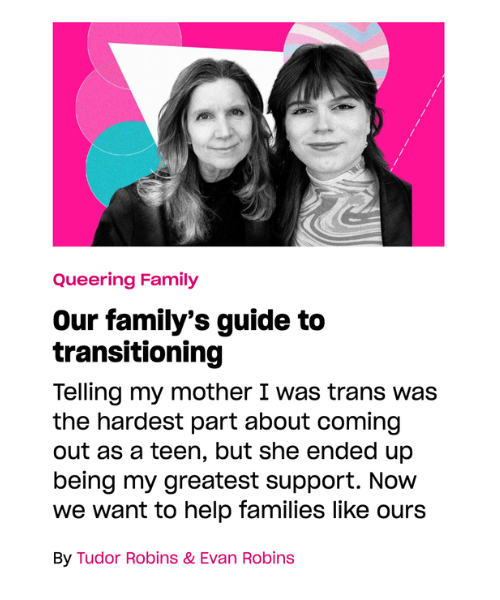
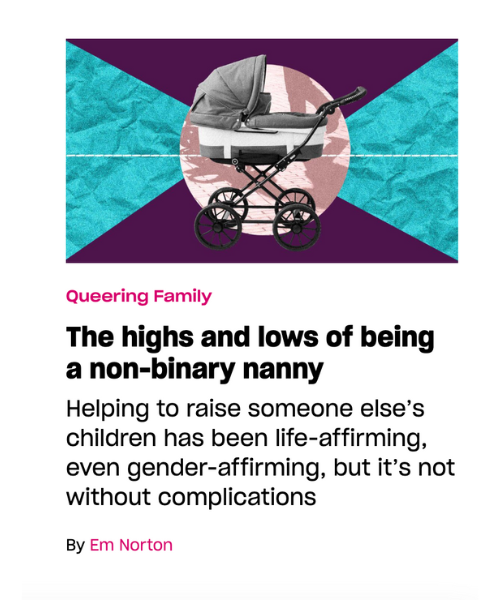
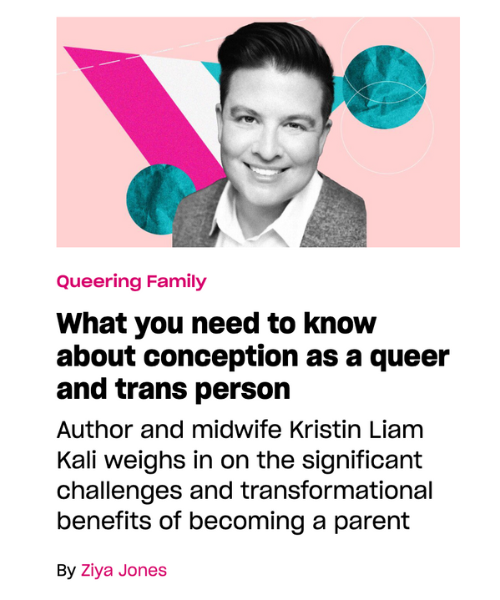
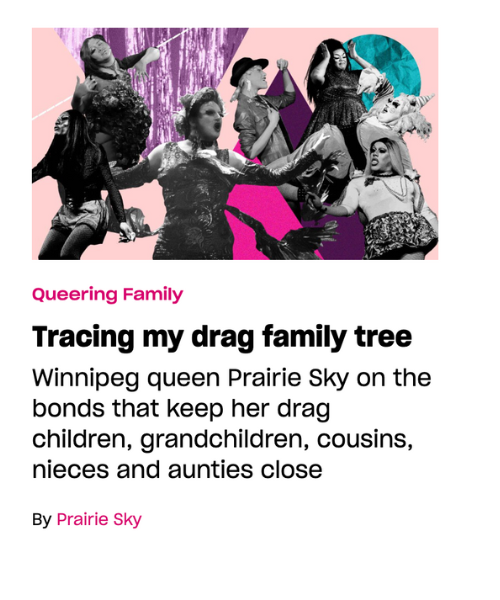
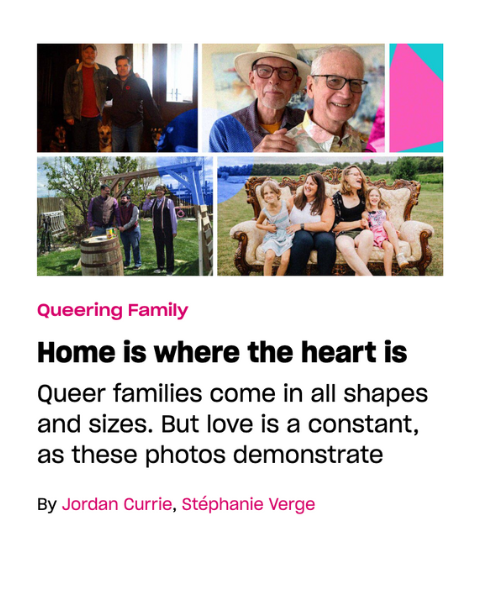
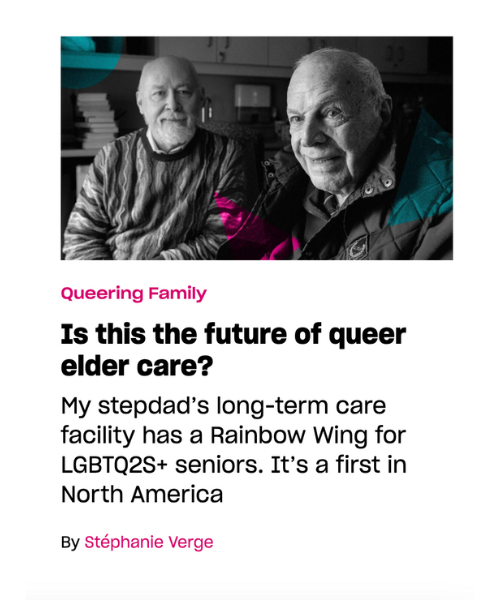
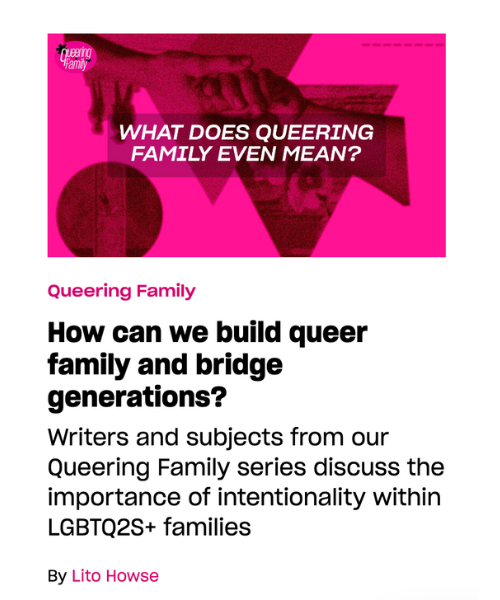
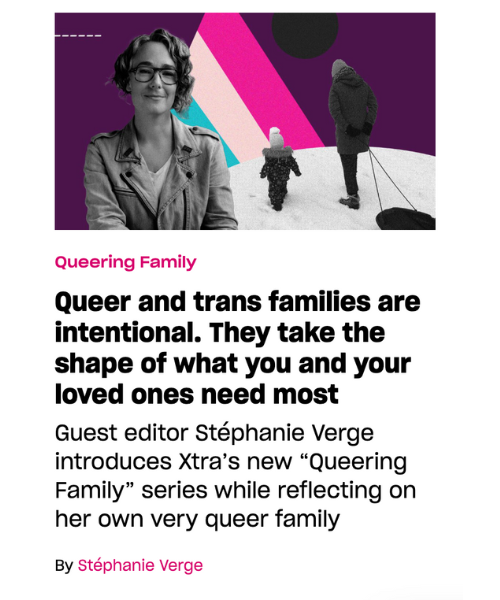

 Why you can trust Xtra
Why you can trust Xtra